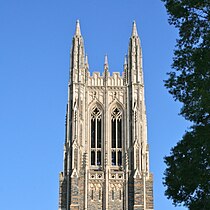MOOC
A massive open online course (MOOC /muːk/) is an online course aimed at unlimited participation and open access via the web. In addition to traditional course materials such as filmed lectures, readings, and problem sets, many MOOCs provide interactive user forums to support community interactions among students, professors, and teaching assistants (TAs). MOOCs are a recent and widely researched development in distance education which were first introduced in 2008 and emerged as a popular mode of learning in 2012.
Early MOOCs often emphasized open-access features, such as open licensing of content, structure and learning goals, to promote the reuse and remixing of resources. Some later MOOCs use closed licenses for their course materials while maintaining free access for students.Robert Zemsky (2014) argues that they have passed their peak: "They came; they conquered very little; and now they face substantially diminished prospects." Others have pointed to a backlash arising from the tiny completion rates.
Before the Digital Age, distance learning appeared in the form of correspondence courses in the 1890s-1920s, and later radio and television broadcast of courses and early forms of e-learning. Typically fewer than five percent of the students would complete a course. The 2000s saw changes in online, or e-learning and distance education, with increasing online presence, open learning opportunities, and the development of MOOCs.
The first MOOCs emerged from the open educational resources (OER) movement. The term MOOC was coined in 2008 by Dave Cormier of the University of Prince Edward Island in response to a course called Connectivism and Connective Knowledge (also known as CCK08). CCK08, which was led by George Siemens of Athabasca University and Stephen Downes of the National Research Council, consisted of 25 tuition-paying students in Extended Education at the University of Manitoba, as well as over 2200 online students from the general public who paid nothing. All course content was available through RSS feeds and online students could participate through collaborative tools, including blog posts, threaded discussions in Moodle and Second Life meetings. Stephen Downes considers these so-called cMOOCs to be more "creative and dynamic" than the current xMOOCs, which he believes "resemble television shows or digital textbooks."
...
Wikipedia

